
An introduction to the Cosmological Time Scale 2. Created by Sal Khan.
- Subject:
- Astronomy
- Physical Science
- Material Type:
- Lesson
- Provider:
- Khan Academy
- Provider Set:
- Khan Academy
- Author:
- Sal Khan
- Date Added:
- 11/19/2010
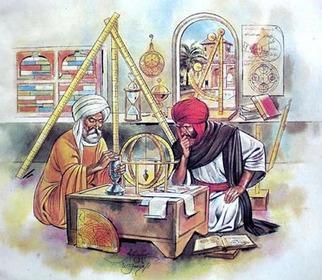

An introduction to the Cosmological Time Scale 2. Created by Sal Khan.

This 10-minute video lesson looks at the beginnings of life on Earth. Life and photosynthesis start to thrive in the Archean Eon. [Cosmology and Astronomy playlist: Lesson 39 of 85]

This 10-minute video lesson looks at the formation of the Earth which is a the byproduct of a local supernova. [Cosmology and Astronomy playlist: Lesson 38 of 85]

This 11-minute video lesson looks at Potassium-Argon (K-Ar) dating and it can be used to date very old volcanic rock and the things that might be buried in between. [Cosmology and Astronomy playlist: Lesson 79 of 85]
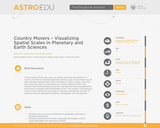
Students learn about local and planetary physical geography / geology, toponymy, planetary landing site selection and cartography. The students learn a complex process of landscape evaluation and city planning, based on the interpretation of photomaps or digital terrain models.

In this activity, students learn about astronomical phenomena we can see in the universe and create their own music inspired by astronomical images. By performing original musical improvisations, students enhance their knowledge of what astronomical phenomena are represented in images and experiment with creative ways of representing these using music. This activity engages students in first hand exploration of music and astronomy connections.
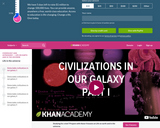
A framework for thinking about how many detectable civilizations are out there. Created by Sal Khan.
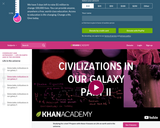
Why do we even care about the Drake Equation. Thinking about the fraction of a planet's life when a civilization might be detectable. Created by Sal Khan.
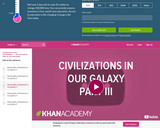
Reconciling with the traditional Drake Equation. Created by Sal Khan.
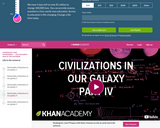
Taking a shot at estimating the number of detectable civilizations. Created by Sal Khan.
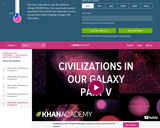
More reasons why we haven't detected anything yet. Created by Sal Khan.
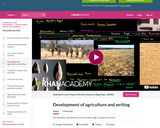
The Paleolithic and Neolithic eras of the Stone Age. Created by Sal Khan.

Thinking about energy consumption for tilling land. Created by Sal Khan.

This activity is an interactive “out-of-the-seat” demo that allows the students to become involved in learning about fibre optic cables by imitating the way that one basically functions. While enjoying the physicality of the demo the children will pick up basic details of light, reflection, optical properties, and applications to technology. Additionally, the activity will go into details of how fibre optics are used in astronomy technology and how it is used to improve our understanding of the universe. An emphasis should be placed on asking direct questions to the children about how these concepts can influence technology, astronomy, and our world to reinforce the concepts that they are learning about.

How the indigenous Australians used fire to change their environment. Created by Sal Khan.

First living things on land clarification (This video copyrighted under Create Commons Attribution and Share-Alike CC-BY-SA license). Created by Sal Khan.

An introduction to Gravity, Weak, Electromagnetic and Strong Forces. Created by Sal Khan.

Collision of the Milky Way Galaxy with Andromeda (forming "Milkomeda"). Created by Sal Khan.

The Hawaiian Islands formed primarily as a result of volcanic activity. While most islands form near tectonic plate boundaries, the Hawaiian Islands are nearly 2000 miles away from the nearest plate margin. Therefore, scientists believe that the islands formed due to the presence of the Hawaiian "hot spot," a region deep in the Earth's mantle from which heat rises. This heat produces melted rock (magma), which then pushes through the crust and solidifies. Created by Sal Khan.
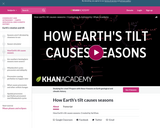
How Earth's tilt causes seasons. Created by Sal Khan.